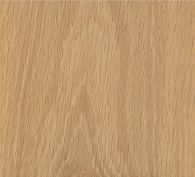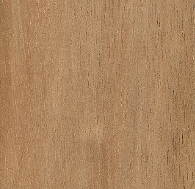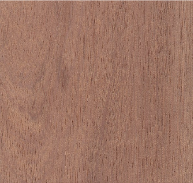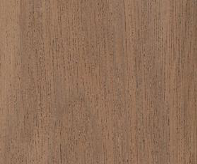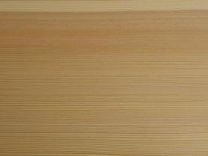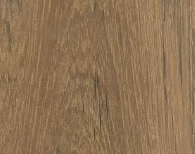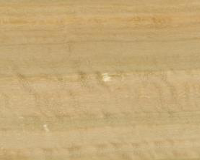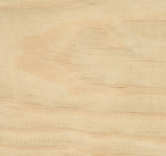Large selection of wood species
Oak wood
White oak is a type of oak wood from which we produce the highest quality wooden windows. This is Prime OAK class American oak wood. This class indicates that oak is selected only for the production of the highest quality high-end products.
Names:
Amerikan White Oak, White Oak, Quercus alba
Habitat:
Eastern US territory
Colors and texture:
The core is light to medium brown.
The sapwood is white to light brown.
The fiber is straight with a rough, uneven texture.
Technical data:
The average weight of dried wood is 755 kg/m³
Hardness – 5,990 N
Bending – 14,830 lbf/in2 (102.3 MPa)
Elasticity – 1762000 lbf/in2 (12.15 GPa)
Crush strength – 7370 lbf/in2 (50,8 MPa)
Shrinkage – radial: 5.6 %, tangential: 10.5 %, volumetric: 16.3 %, ratio/ratio: 1.9
Wood processing:
Oak wood is dried naturally, thus preserving its properties and unchanged texture. The wood is easy to process and easy to glue. Glue is used for gluing wood, which is resistant to moisture, firmly glues and impregnates the wood, so the structure is protected from moisture penetration.
Oak wood is characterized by extremely high durability, strength, resistance to deformation, moisture, rot and various fungal diseases, thus we really recommend it for those who want wooden windows. This wood is rich and refined in color, fits perfectly in the interior. However, those who want to get other colors can feel free to choose them, because oak wood is easily covered with paint, so your oak windows can be painted in the color of your choice and thus match both the interior and exterior of your home. Oak windows provide exceptional value due to their strength, massiveness and durability.
Pine wood
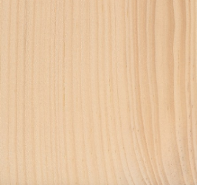 Scots pine is one of the most popular types of wood, from which we produce exclusive windows. We use only FSC 100 % certified pine beam. FSC certification guarantees the origin of the highest quality wood. Customers can choose wood with or without spikes as needed.
Scots pine is one of the most popular types of wood, from which we produce exclusive windows. We use only FSC 100 % certified pine beam. FSC certification guarantees the origin of the highest quality wood. Customers can choose wood with or without spikes as needed.
Names:
Scots Pine, Pinus Sylvestris
Habitat:
Europe, North Asia, New Zealand, Northeastern and Midwestern United States
Colors and texture:
The core is light reddish-brown.
The sapwood is yellowish or reddish white.
The fiber has a medium to smooth in texture.
Technical data:
The average weight of dried wood is 550 kg/m3
Hardness – 2420 N
Bending – 12080 lbf/in2 (83,3 MPa)
Elasticity – 1461000 lbf/in2 (10,08 GPa)
Crush strength – 6020 lbf/in2 (41,5 MPa)
Shrinkage – radial: 5.2 %, tangential: 8.3 %, volumetric: 13.6 %, ratio/ratio: 1.6
Wood processing:
Pine wood is easy to process and glue. Only the best certified glue is used for gluing beams, as well as the most advanced technologies and equipment that ensure the highest quality of beams. Wood gluing complies with the European standard DIN EN 204, D4. It is a wood that is easy to process, shrinks little when dry, and at the same time is strong.
Pine wood is characterized by very good properties such as strength, resistance to rot and moisture. It also has good thermal and sound insulation properties. These important properties of wood keep pine wood one of the most popular when choosing wooden windows. Pine wood has long been used in the manufacture of windows, and it is one of the most commonly used types of wood. Windows made of pine wood are still considered classic windows that have been manufactured for many years.
Meranti wood
Meranti is one of the most exotic types of wood from which we make exclusive windows. This timber is exported from the Indo-China region. It belongs to the mahogany species. The uniqueness of the wood is radial ornaments with reddish-brown inserts.
Names:
Light Red Meranti, Lauan, Philippine Mahogany, Shorea spp.
Habitat:
Southeast Asia
Colors and texture:
The core is from pale pink to brown, glossy.
The sapwood is is barely visible, pale pink/light red/dark gray, 5–10 cm wide.
The structure is quite simple (rough), solid.
Technical data:
The average weight of dried wood is 480 kg/m3
Hardness – 2460 N
Bending – 11210 lbf/in2 (77,3 MPa)
Elasticity – 1652000 lbf/in2 (11.39 GPa)
Crush strength – 6120 lbf/in2 (42,2 MPa)
Shrinkage – radial: 4.1 %, tangential: 7.8 %, volumetric: 12.6 %, ratio/ratio: 1.9
Wood processing:
Meranti wood is easy to process due to its low density. It is also easy to glue and paint. It is a light wood that is easy to process, shrinks little when dried.
Meranti wood is characterized by natural resistance to rot and moisture, insects and sunlight exposure. Due to its exceptional properties, this wood is perfect for the production of windows. The eye is attracted by the different color gamut of shades of red, and windows cannot even be covered with any color because of this naturally beautiful color. Windows made of meranti wood emphasize quality, exclusivity and luxury, and have a high thermal resistance.
Sapeli wood
Sapeli wood is a tropical African hardwood belonging to the mahogany group. Due to the increased popularity of this wood, this wood is also called “Sapeli mahogany”. It stands out from other woods in a luxurious color.
Names:
Sapele, Sapelli, Entandrophragma cylindricum
Habitat:
Tropical Africa
Colors and texture:
The core is from reddish brown to purple and brown. It is of even color.
The sapwood is from reddish gray to whitish, 7–10 cm wide.
The texture is fine to medium. The fiber is minimally intertwined.
Technical data:
The average weight of dried wood is 670 kg/m3
Hardness – 6280 N
Bending – 15930 lbf/in2 (109,9 MPa)
Elasticity – 1746000 lbf/in2 (12,04 GPa)
Crush strength – 8750 lbf/in2 (60,4 MPa)
Shrinkage – radial: 4.8 %, tangential: 7.2 %, volumetric: 12.8 %, ratio/ratio: 1.5
Wood processing:
Sapeli wood is easily sanded, the natural gloss is easily obtained. The stability and durability of this wood depends on whether it is properly dried.
Sapeli wood is characterized by many properties of mahogany, both in terms of color and durability. It is a great texture, strong and solid hardwood. Windows made of sapeli wood are durable, reliable and require little maintenance. And the exclusive color gives luxury and a sense of solidity to your windows.
Sipo wood
Sipo wood is also called Sipo mahogany because of its color. It is the closest wood species to mahogany. This exotic wood stands out from the rest in its deep and rich color. Its appearance is similar to Sapeli wood, only Sipo is richer in color.
Names:
Sipo, Entandrophragma utile Sprague, Utile
Habitat:
West, East and Central Africa
Colors and texture:
The sapwood is clearly separated and is reddish white.
The core is reddish brown.
The texture is fine to medium. It is of medium gloss. The fiber is slightly intertwined.
Technical data:
The average weight of dried wood is 635 kg/m3
Hardness – 5260 N
Bending – 15060 lbf/in2 (103,8 MPa)
Elasticity – 1689000 lbf/in2 (11,65 GPa)
Crush strength – 8280 lbf/in2 (57,1 MPa)
Shrinkage – radial: 4.9 %, tangential: 6.9 %, volumetric: 11.8 %, ratio/ratio: 1.4
Wood processing:
This wood is processed quite easily, so it is suitable for the production of windows.
Sipo wood is characterized by insect resistance, relatively good durability and longevity, and an odor similar to cedar wood. High-quality windows are made of sipo wood, which are unique only due to the non-standard and rare type of wood, they are also durable, especially aesthetically pleasing. The rich color of the wood gives the windows exclusivity and a touch of luxury.
Larch wood
Siberian larch is most often used for the production of windows. Siberian larch is a tree of exceptionally rare properties. It is one of the most weather resistant wood species.
Names:
Siberian Larch, Larix Sibirica,
Habitat:
Western, Central and Southern Siberia
Colors and texture:
The sapwood is yellowish.
The core is reddish brown and may be purple.
The effect of the atmosphere gives the surface of the wood a gray color, i. e. covers with patina.
Technical data:
The average weight of dried wood is 850 kg/m3
Hardness – 5260 N
Bending – 54,1 – 79,9 (MPa)
Elasticity – 1689000 lbf/in2 (11,65 GPa)
Crush strength – 33,7 – 40,6 (MPa)
Shrinkage – radial: 4.2 %, tangential: 8.2 %, volumetric: 11.8 %, ratio/ratio: 1.4
Wood processing:
This wood is processed quite easily, does not require additional chemical treatment, because the grooves are dense and the wood is soaked in a natural impregnant – resin.
Larch wood is characterized by longevity, high quality and exceptional durability in all weather conditions. These properties are perfect for window production. It is a solid and dense wood. Larch wood is also special in that it hardens and does not rot when soaked in water. Windows made of Siberian larch wood will serve your home reliably and for a long time.
Teak wood
Teak is one of the most common tropical hardwood trees. This wood is exceptional for its natural appearance and durability. Therefore, it is ideal for use in outdoor constructions.
Names:
Teak, Birmos Teak, Tectona grandis
Habitat:
South and Southeast Asia
Colors and texture:
The core is from yellowish brown to dark brown, reminiscent of walnut, fragmented, has brown strips of 2–8 cm in width and glossy.
The sapwood is is yellowish white to light gray, 2–5 cm wide.
The texture is moderately porous, and has large pores. The brightness and exclusivity are given by the bright dark and light rings seen in the cross section. The fiber is straight, slightly intertwined in some places.
Technical data:
The average weight of dried wood is 655 kg/m3
Hardness – 4740 N
Bending – 14080 lbf/in2 (97,1 MPa)
Elasticity – 1781000 lbf/in2 (12,28 GPa)
Crush strength – 7940 lbf/in2 (54,8 MPa)
Shrinkage – radial: 2.6 %, tangential: 5.3 %, volumetric: 7.2 %, ratio/ratio: 2.0
Wood processing:
This wood is easy to process in all aspects, dries slowly and has good gluing properties.
Teak wood is characterized by water resistance and is therefore very suitable for the production of windows. Teak is also exceptionally resistant to rot, impervious to sun, rain, cold or snow. This wood is valued for its excellent stability, good strength properties and easy operation. Windows made of teak wood will be particularly resistant to environmental influences, durable and strong.
Eucalyptus wood
Eucalyptus wood is one of the most versatile woods in the world that we can apply in many areas. It is a fast growing tree.
Names:
Blue Gum, Tasmanian Blue Gum, Eucalyptus Globulus
Habitat:
Northern Spain
This fast-growing tree is widely grown as a plantation species in Australia and other parts of the subtropical climate.
Colors and texture:
The core is light yellowish brown. The narrow core is pale gray/white. It is minimally glossy.
The texture is smooth.
Technical data:
The average weight of dried wood is 820 kg/m3
Hardness – 10550 N
Bending – 19530 lbf/in2 (134,7 MPa)
Elasticity – 2720000 lbf/in2 (18,76 GPa)
Crush strength – 11160 lbf/in2 (76,9 MPa)
Shrinkage – radial: 6.8 %, tangential: 12.8 %, volumetric: 19.7 %, ratio/ratio: 1.9
Wood processing:
Eucalyptus wood is very easy to sand and paint, so you can easily match the color you need.
Eucalyptus wood is characterized by durability and termite resistance. One of the distinctive features of this wood is that it can remain in a humid environment for up to 10 years and will not be affected by rot. It is hard and durable wood, and the windows made of it will be durable and service for many years, and stand out for their appearance.
Accoya wood
Accoya is sustainably grown coniferous wood with exceptional operational efficiency. It is an exceptional wood that has no analogues in the world. It stands out from other woods for its dimensional stability, lightness, unbranchedness and durability. It is 100 % natural wood, free of toxic substances. The world's leading high-tech wood with a durability of more than 25 years.
Names:
Accoya
Habitat:
New Zealand
Colors and texture:
Naturally light yellow in color.
Unbranched.
Technical data:
Durability class 1
Density 510 kg/m3
Crush strength – 39 N/mm2
Static curvature – 130 N/mm2
Modulus of elasticity – 130 N/mm2
Shrinkage – radial: 0.7 %, tangential: 1.5 %
Wood processing:
The production of this wood differs from others in that it uses a patented harmless acetylation process where the pores are filled with acetic acid. During this process, the wood is consistently modified from the core, thus changing the molecular structure of the wood. Accoya wood is easy to process.
Accoya wood is characterized by durability, dimensional stability. This wood is special in that the dimensions remain constant under the influence of humidity and different temperatures. As this wood is not affected by moisture or fluctuations in different temperatures, the windows will not be distorted and will be stable, easy to open all year round. It is 100 % uniformly treated wood throughout the cross-section, this treatment ensures the strength and durability of the wood. Windows made of accoya wood will be particularly durable with minimal maintenance costs. Windows made of accoya wood have particularly good insulating properties, which will allow you to enjoy the warmth.
